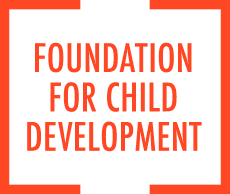https://www.fcd-us.org/the-child-care-arrangements-of-preschool-children-in-immigrant-families-in-the-united-states/
The Foundation for Child Development Working Paper Series:
This is the first nationally representative study about child care use among immigrant families based on their children’s and their parents’ nativity status.
Findings
Specific findings about patterns of child care use among children of immigrants include:
- Child care arrangements vary by immigrant and by generational status, as well as the national origins (including ethnicity), and poverty status of the families.
- Children in immigrant families are less likely to use center-based care than those in non-immigrant (U.S.-born parents with U.S.-born children) families.
- Kin care was found to be the most commonly occurring primary and secondary care arrangements among preschool children in immigrant families. In the five states where most children in immigrant families reside, second-generation children (U.S.-born with at least one foreign-born parent) are more likely to use kin care than third-generation children (native-born children with native-born parents).
- Except for Black children, Mexican, Asian, and White children in immigrant families are less likely to use center-based care compared to their counterparts in non-immigrant families. This difference persists for children of Mexican descent when both parents and children are born in the U.S. These Mexican American children are far less likely to use center-based care compared with Asian, White, and Black children whose parents are born in the U.S.
- Children in immigrant families originating in Mexico and from Asian countries are under represented in center-based care compared with their representation in the population. White children in immigrant families use center-based care in higher proportions than their representation in the population. Whereas Asian children in immigrant families tend to use non-relative and parental care, Mexican children in immigrant families more frequently use non-relative and kin care.
- The economic resources of immigrant families are related to costs of and time in center-based care. Nearly 30 percent of all children of immigrants live in poverty compared with 16.2 percent of all children in the U.S. Depending on ethnicity and poverty status, some immigrant families paid less while some paid more for center based care than did non-immigrant families. Similarly, the time spent in child care varied by immigrant status, ethnicity, and poverty, though a more general pattern was that Mexican and Asian children in immigrant families spend considerable less time in center-based care than their counterparts in non-immigrant families. Whether the findings for purchasing child care and hours of use are related to immigrant families’ values or preferences, and to their lack of information and/or their access to subsidies is not known.
- Based on the hourly rates paid by families for non-relative or center-based care, it appears that the out-of-pocket child care costs for immigrant families’ household budgets is considerably higher than that for non-immigrant families’ household budgets.
These findings support a small number of studies on child care use in immigrant families based on research in one geographical area or one immigrant group. The results suggest that studying child care use among immigrant children, drawing on both national data and on local studies, can be productive for understanding their adaptations to life in the United States. In general, these results on child care arrangements suggest that immigrant families of different national or ethnic origins take different pathways in adapting to raising their children in new social and work conditions.
